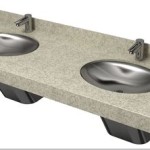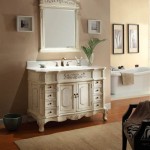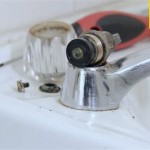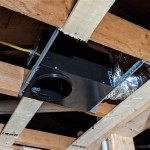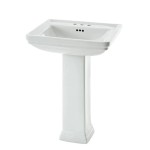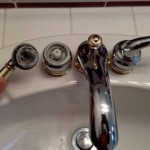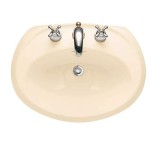How To Clean Mold In Bathroom Ceiling
Mold growth in the bathroom, particularly on the ceiling, is a common household problem. Bathrooms are characterized by consistently high humidity levels, stemming from activities like showering and bathing. This humidity creates an ideal environment for mold spores, which are naturally present in the air, to proliferate. Mold not only presents an aesthetic issue but, more importantly, can pose health risks to occupants of the home, particularly those with respiratory sensitivities or allergies. Therefore, understanding how to effectively and safely clean mold from a bathroom ceiling is crucial for maintaining a healthy and well-maintained living space.
Before initiating the cleaning process, identifying the type and extent of the mold growth is essential. While most bathroom mold is surface mold, severe infestations can indicate underlying structural problems or persistent moisture issues. If the mold covers a large area (more than 10 square feet) or if there is a strong, musty odor suggesting mold growth within the walls or ceiling, it is advisable to consult with a professional mold remediation service. Attempting to address large-scale mold problems without proper equipment and expertise can be ineffective and potentially spread the mold further.
This article will outline the steps involved in effectively cleaning mold from a bathroom ceiling, emphasizing safety precautions and preventative measures to minimize the likelihood of future mold growth. The information provided aims to equip homeowners with the knowledge necessary to address minor mold issues themselves while recognizing the limitations and necessity of professional intervention when faced with more significant infestations.
Safety Precautions Before Cleaning
Prior to commencing any mold cleaning activity, prioritizing personal safety is paramount. Mold spores can be irritating to the respiratory system, skin, and eyes. Adequate personal protective equipment (PPE) is essential to minimize exposure during the cleaning process. Recommended PPE includes:
- A respirator or face mask: A NIOSH-approved N95 respirator or a higher-rated mask is essential to prevent the inhalation of mold spores. Regular surgical masks offer minimal protection and are not suitable for mold remediation.
- Eye protection: Goggles that create a tight seal around the eyes are necessary to prevent mold spores from entering and causing irritation or allergic reactions.
- Gloves: Wear waterproof, non-porous gloves, such as rubber or nitrile gloves, to protect the skin from direct contact with mold and cleaning solutions.
- Protective clothing: Wear disposable, long-sleeved clothing or a washable set of clothes that can be immediately laundered after the cleaning process. This minimizes the risk of transferring mold spores to other areas of the home.
In addition to personal safety, ensuring adequate ventilation in the bathroom is crucial. Open windows and turn on the bathroom exhaust fan to circulate air and prevent the buildup of mold spores. If possible, consider using a portable air purifier with a HEPA filter to further reduce airborne mold spores. Furthermore, it is wise to clear the bathroom of any personal items that may be susceptible to mold contamination, such as towels, bath mats, and toiletries. These items should be either thoroughly cleaned or disposed of to prevent the spread of mold.
Finally, it's vital to understand that some individuals are more sensitive to mold than others. If anyone in the household has known allergies to mold, asthma, or other respiratory conditions, it is advisable for them to avoid the area during the cleaning process or, ideally, have someone else perform the cleaning. Similarly, pregnant women and young children should be kept away from the affected area during cleaning due to their increased susceptibility to the harmful effects of mold exposure.
Effective Cleaning Solutions and Methods
Several cleaning solutions and methods can be employed to effectively remove mold from a bathroom ceiling. The choice of solution often depends on the severity of the mold growth and the type of surface being cleaned. It is crucial to test the chosen cleaning solution on a small, inconspicuous area of the ceiling first to ensure it does not damage or discolor the surface.
Here are some commonly used and effective cleaning solutions:
- Vinegar: White distilled vinegar is a natural and readily available cleaning agent that effectively kills many types of mold. Pour undiluted vinegar into a spray bottle, spray the affected area thoroughly, and let it sit for at least an hour. Then, scrub the area with a brush or sponge and wipe clean with a damp cloth.
- Baking soda: Baking soda is another natural and mild abrasive that can help remove mold. Create a paste by mixing baking soda with water, apply it to the moldy area, and let it sit for about 15 minutes. Scrub the area gently with a brush or sponge and rinse with water. Baking soda also acts as a deodorizer, helping to eliminate any musty smells.
- Bleach solution: A solution of bleach and water is a powerful mold killer, but it should be used with caution. Mix one part bleach with ten parts water. Spray the solution onto the moldy area, let it sit for about 10 minutes, and then scrub with a brush or sponge. Rinse thoroughly with water. It is crucial to ensure adequate ventilation when using bleach and to avoid mixing it with ammonia or other cleaning products, as this can create toxic fumes. Bleach can also discolor certain surfaces, so testing in an inconspicuous area is essential.
- Hydrogen peroxide: A 3% solution of hydrogen peroxide can effectively kill mold and lighten stains. Spray the hydrogen peroxide onto the moldy area, let it sit for 10-15 minutes, and then scrub with a brush or sponge. Rinse with water. Hydrogen peroxide is a gentler alternative to bleach and is less likely to cause discoloration.
- Commercial mold cleaners: Numerous commercial mold cleaners are available on the market, specifically formulated to remove mold and mildew. When using these products, always follow the manufacturer's instructions carefully and wear appropriate PPE.
Regardless of the cleaning solution used, the cleaning process should involve the following steps:
- Preparation: Gather all necessary cleaning supplies, including the chosen cleaning solution, a spray bottle, a scrub brush or sponge, a bucket of clean water, and clean cloths.
- Application: Spray the cleaning solution liberally onto the moldy area of the ceiling. Ensure the area is thoroughly saturated.
- Soaking: Allow the cleaning solution to sit on the moldy area for the recommended time. This allows the solution to penetrate and kill the mold spores.
- Scrubbing: Using a scrub brush or sponge, vigorously scrub the moldy area to remove the mold. Pay attention to any crevices or textured surfaces where mold may be deeply embedded.
- Rinsing: Rinse the cleaned area thoroughly with clean water to remove any remaining cleaning solution and mold residue.
- Drying: Dry the area completely with a clean cloth or towel. Proper drying is crucial to prevent further mold growth. Consider using a fan to speed up the drying process.
- Inspection: After the area is dry, carefully inspect it to ensure all mold has been removed. If any mold remains, repeat the cleaning process.
Preventative Measures to Minimize Future Mold Growth
Preventing future mold growth is as important as cleaning existing mold. Addressing the underlying causes of humidity is the most effective way to minimize the recurrence of mold on bathroom ceilings. Here are some key preventative measures:
- Improve ventilation: Ensuring adequate ventilation in the bathroom is crucial. Always turn on the exhaust fan during and after showering or bathing. If the bathroom does not have an exhaust fan, consider installing one. Keep windows open when weather permits to allow for natural air circulation.
- Control humidity: Use a dehumidifier to reduce humidity levels in the bathroom, especially during periods of high humidity. Aim to keep the humidity level below 60%.
- Repair leaks promptly: Immediately repair any leaks in the plumbing, roof, or walls that may contribute to moisture buildup. Even small leaks can create a favorable environment for mold growth.
- Wipe down surfaces: After showering or bathing, wipe down wet surfaces, such as shower walls, doors, and the ceiling, with a clean cloth or squeegee. This helps to remove excess moisture and prevent mold from taking hold.
- Clean regularly: Regularly clean the bathroom, including the ceiling, with a mild detergent and water. This helps to remove dirt, soap scum, and other substances that can provide a food source for mold.
- Use mold-resistant paint: Consider using mold-resistant paint on the bathroom ceiling. These paints contain additives that inhibit mold growth and provide an extra layer of protection.
- Proper insulation: Ensure the bathroom is properly insulated to prevent condensation, especially in colder climates. Poor insulation can lead to temperature differences that cause moisture to condense on surfaces.
- Monitor for signs of mold: Regularly inspect the bathroom for signs of mold growth, such as discoloration, musty odors, or visible mold spores. Addressing mold issues early can prevent them from becoming more severe.
By implementing these preventative measures, homeowners can significantly reduce the likelihood of future mold growth in their bathrooms. Regular maintenance and vigilance are key to maintaining a healthy and mold-free environment.

Cleaning Mold From Bathroom Ceilings Like A Pro Lovetoknow

Bathroom Ceiling Mold Removal When To Clean Call Branch Environmental

How To Remove Black Mold From A Bathroom Ceiling

What Is The Best Way To Remove Mold From Bathroom Ceiling

Mold On Bathroom Ceiling How To Clean Off

Cleaning Mrs Hinch Fans Share Tips To Remove Ceiling Mould Express Co

Don T Let Mould Take Over How To Remove It From Your Ceiling

How To Clean Black Spots In The Bathroom Family Handyman

Mold On Bathroom Ceiling How To Clean Off

How To Get Rid Of Mold On Your Bathroom Ceiling Aqa
Related Posts
